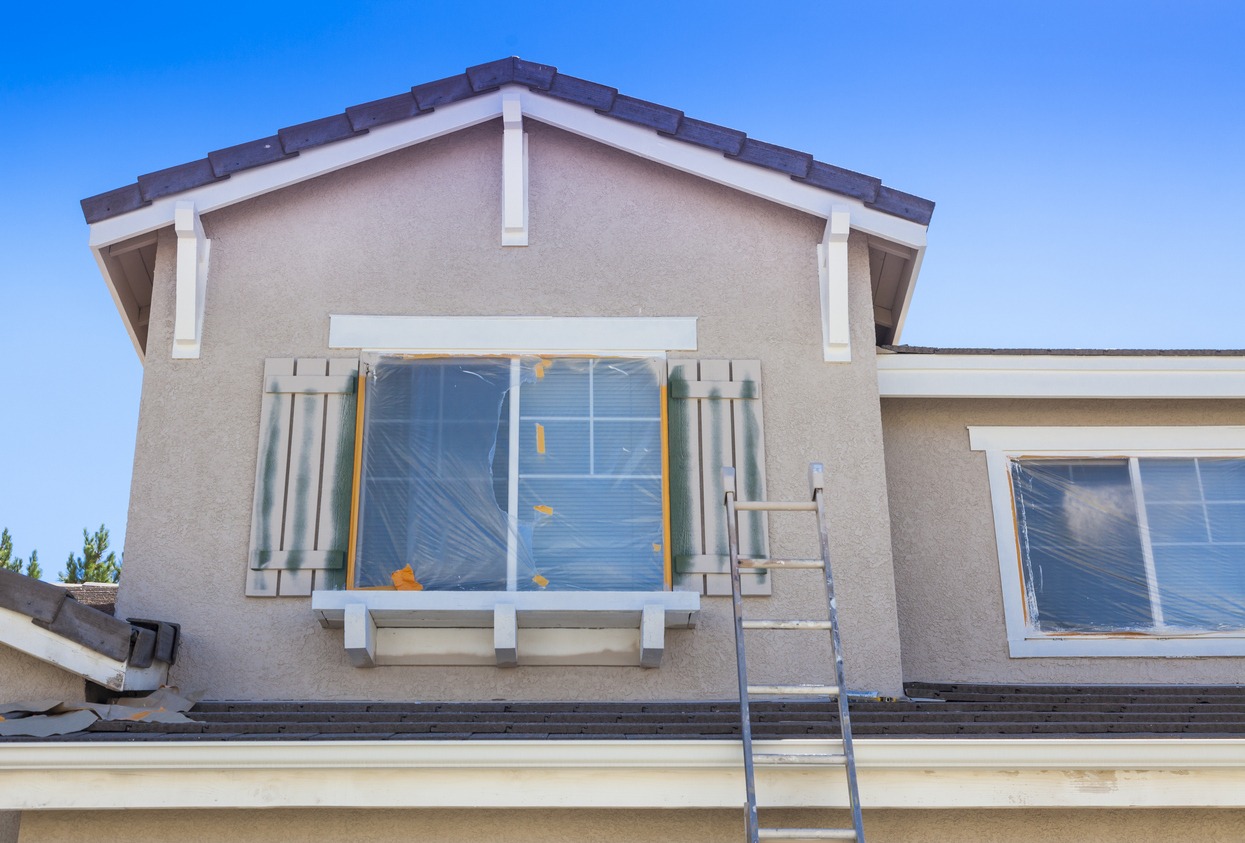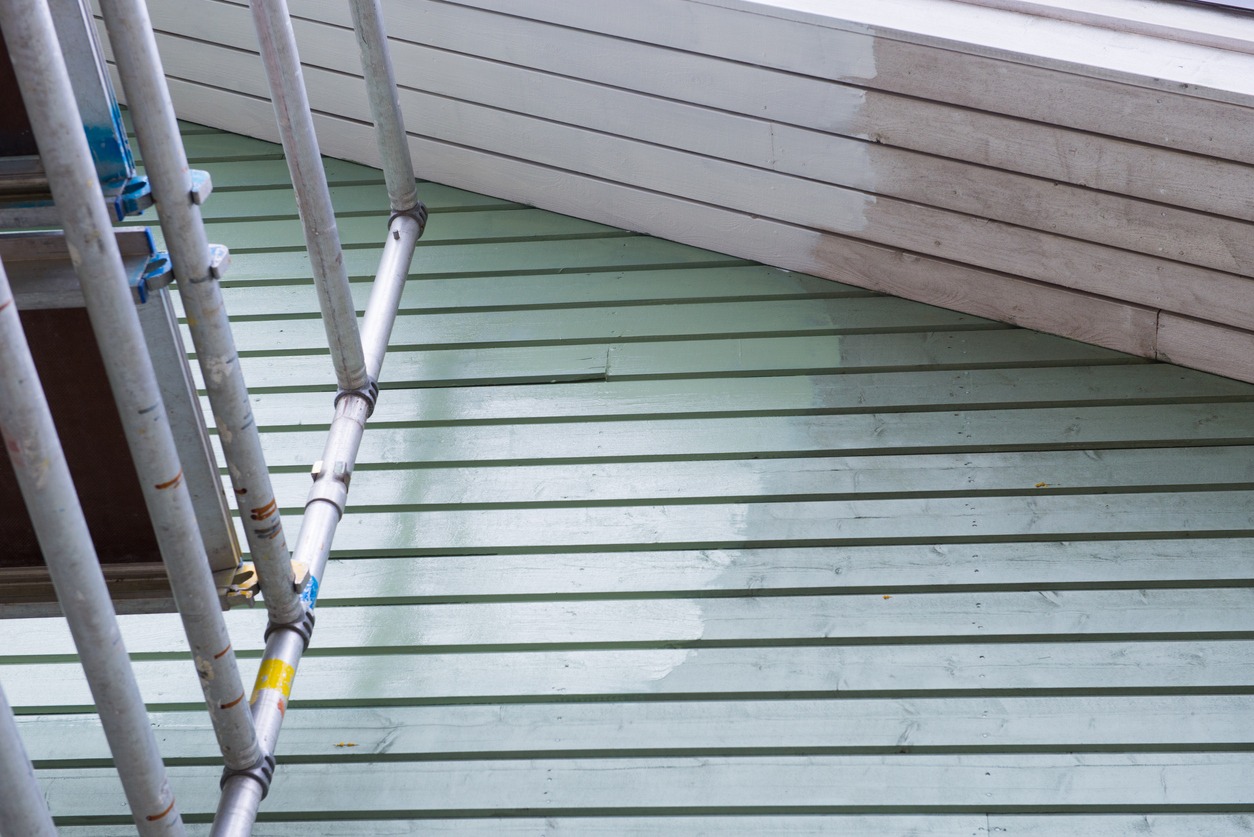A fresh coat of paint can completely transform the exterior of your home, boosting curb appeal and protecting your property from the elements. However, achieving a high-quality finish isn’t just about picking the right color—it’s about following a proven process. This article outlines a straightforward, five-step method to ensure your exterior paint job looks professional and lasts for years. From preparation to the final touches, each step is designed to build on the last, culminating in a stunning and durable exterior.
1. Planning and Preparation
Before any paint can be applied, thorough planning and preparation are necessary. This includes deciding on the type and color of paint best suited for your home’s exterior based on the climate and the material of your house. Additionally, gather all the tools and materials you’ll need such as ladders, brushes, rollers, and safety gear. Preparation also involves checking the weather forecast; exterior painting is best done in mild weather conditions to allow the paint to dry and cure properly.
Once the logistics are sorted, the next step is to prepare the surface. This crucial phase involves cleaning the walls to remove dirt, grime, and mildew that can prevent the paint from adhering properly. Use a pressure washer for effective cleaning and allow the surface to dry completely. If necessary, sand the walls to remove loose paint and smooth out the surface. Any gaps or cracks should be filled with caulk to prevent moisture intrusion and ensure a smooth finish.
2. Priming
Priming is key in achieving a uniform and durable paint job. Primer acts as an adhesive layer that paint can bond to more effectively than a bare surface. It also provides an extra layer of protection against elements. Select a primer that matches the type of paint you are using (oil-based or water-based) and is suitable for your home’s exterior materials.
Apply the primer evenly, covering all areas that will be painted. This step is especially important if you are making a significant color change or painting over a darker shade. Let the primer dry completely, according to the manufacturer’s instructions, before moving on to painting. This can take anywhere from a few hours to a full day, depending on the weather conditions.
3. Choosing the Right Paint
Selecting the right paint is critical not just for aesthetics but also for the longevity of the paint job. Exterior paints are available in various formulations that cater to different needs and weather conditions. Choose a paint that is formulated for exterior use and compatible with the surface of your home. High-quality exterior paint will resist fading, chipping, and mildew growth.
When selecting a color, consider factors such as the direction your home faces and the typical weather conditions in your area. Lighter colors tend to last longer and resist UV damage better than darker colors, which can fade more quickly. Additionally, make sure to purchase enough paint to cover all exterior surfaces adequately, taking into account multiple coats if necessary.
4. Painting
Now comes the most transformative step—painting. Begin by using brushes or rollers to apply paint evenly across the surface. Start from the top and work your way down to prevent drips and streaks. Use a brush to cut in around windows and doors and a roller for larger flat surfaces. It’s important to apply paint in thin, even coats, allowing each coat to dry completely before applying the next. This ensures proper adhesion and a uniform appearance.
Be mindful of the edges and any architectural details. These areas require careful attention to ensure that the entire surface is covered and protected. If the weather changes, be prepared to pause the work and cover wet paint to protect it from dust and debris.
5. Cleanup and Touch-ups
After the final coat has dried, inspect your work and address any missed spots or edges. Touch up as needed to ensure a polished and professional finish. Once all touch-ups are complete, clean up the area by removing any painter’s tape, collecting drop cloths, and properly disposing of empty paint cans and hazardous materials.
Finally, store any leftover paint for future touch-ups. Label the cans with the date and the specific surfaces they were used on. Properly maintained, a good exterior paint job can protect and beautify your home for many years, making this detailed process a worthwhile investment.
Should You Hire Professional Painters for Exterior Painting?
Deciding whether to tackle an exterior painting project on your own or to hire professional painters is an important choice that can impact both the process and the outcome. While DIY projects can be rewarding, there are compelling reasons to consider professional services for painting the exterior of your home. Here are several factors to weigh in:
- Quality of Work: Professional painters have the skills and experience to deliver a high-quality finish that might be hard to achieve on your own. They are trained to handle intricate details and surfaces unevenly, ensuring a smooth and even coat of paint across all types of exterior materials.
- Efficiency: Painting the exterior of a house is a large undertaking that requires significant time and effort. Professional painters can complete the job much faster due to their skills, experience, and teams. This efficiency means your project is completed quicker, reducing the disruption to your daily life.
- Right Tools and Equipment: Professional painters come equipped with all the necessary tools and equipment for the job, from high-quality brushes and rollers to professional-grade ladders and safety gear. This not only means that the job will be done more efficiently but also safer.
- Longevity of Paint Job: Due to their expertise, professional painters can ensure that the paint applied not only looks good but also lasts longer. Proper surface preparation and the correct application of primers and paints can significantly extend the life of a paint job, ultimately saving you money in the long run.
- Safety: Exterior painting often involves working at heights, dealing with complex surfaces, and using potentially hazardous chemicals. Professional painters are trained to handle these risks and often come with insurance to protect against accidents, protecting you from potential liability.
- Warranty and Assurance: Many professional painting services provide a warranty for their work. This warranty can give you peace of mind, knowing that if issues arise related to the quality of the paint job, they will be dealt with professionally and without additional cost.
- Stress-Free: Managing a painting project can be stressful, from planning and preparation to execution. Hiring professionals can alleviate this stress, as they handle every aspect of the job, allowing you to focus on other priorities without the hassle.
Considering these factors, hiring professional painters for your exterior painting needs can be a wise investment, ensuring that the job is done efficiently, safely, and to a standard that enhances the curb appeal and value of your home.
Conclusion
From the meticulous preparation of surfaces to the careful application of each coat of paint, every stage of the exterior painting process is designed to achieve a durable and visually appealing finish. By adhering to these steps, homeowners can feel confident that their exterior paint job will withstand the elements and look great for years to come.
For those who prefer a professional touch to ensure the highest quality results, our team at Custom Painting, Inc. is ready to help. With extensive experience in exterior painting, we provide top-tier service and lasting results. To learn more about how we can enhance the beauty and longevity of your home, call us at (925) 294-8062 or fill out our Contact Form here.



